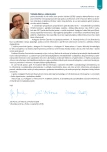High prevalence of cardiovascular risk factors and inadequate control of LDL cholesterol levels in the population of 40-year old men and 50-year old women in the Czech Republic
Authors:
Zdeněk Chmelík 1; Michal Vrablík 1; Martina Vaclová 1; Věra Lánská 2
Authors‘ workplace:
III. interní klinika – klinika endokrinologie a metabolismu, 1. LF UK a VFN v Praze
1; Institut klinické a experimentální medicíny, oddělení hygieny, Praha
2
Published in:
AtheroRev 2016; 1(3): 111-115
Category:
Overview
Goal:
The aim of the study was to assess a cardiovascular (CV) risk profile in the population of 40-year old men and 50-year old women stratified for CV risk and discuss the effectiveness of control of LDL cholesterol levels.
Methodology:
The study included 961 men at an average age of 42.9 ± 4.7 years and 851 at an average age of 51.2 ± 3.6 years. A questionnaire method was used to collect data concerning personal, pharmacological and family anamneses including results of laboratory examinations. The results were statistically evaluated and the following parameters were calculated: average, standard deviation, median and the first quartile. The CV risk was established using a SCORE algorithm with modifications as recommended by the guidelines.
Results:
The distribution of CV risk within the followed cohort: 24 % of probands were at low risk, 51 % at moderate risk, 17 % at high and 8 % at very high CV risk. The proportion of patients who reached LDL cholesterol target levels was dramatically lower in the cohorts with very high (3 %) or high (10 %) risk than in the cohorts with moderate (31 %) or low risk (59 %). The incidence of dyslipidemia was 20 %, equal in both genders. Arterial hypertension was newly diagnosed in 8 % of men and 5 % of women and type 2 diabetes mellitus was a new diagnosis for 3 % of both men and women. Prevalence of dyslipidemia reached 39 % for men and 41 % for women, arterial hypertension 43 % for men and 45 % for women and type 2 diabetes mellitus had been diagnosed earlier in 11 % of men and women alike. 56 % of 101 patients with LDL cholesterol > 5 mmol/l were not treated with statin.
Conclusion:
The European recommendations propose that population-wide screening for risk factors including a lipid profile analysis should be considered for the populations of 40-year old men and 50-year old or postmenopausal women. High prevalence and incidence of CV risk factors, including a poor level of their control, was identified in the followed cohort. This finding leads to the idea that preventive check-ups at a younger age should be considered (e.g. in 30-year old men and 40-year old women). Of course this hypothesis requires further verification.
Key words:
cardiovascular risk – LDL cholesterol
Sources
1. Piepoli MF, Hoes AW, Agewall S et al [Authors/Task Force Members]. 2016 European Guidelines on cardiovascular disease prevention in clinical practice: The Sixth Joint Task Force of the European Society of Cardiology and Other Societies on Cardiovascular Disease Prevention in Clinical Practice (constituted by representatives of 10 societies and by invited experts)Developed with the special contribution of the European Association for Cardiovascular Prevention & Rehabilitation (EACPR). Eur Heart J 2016; 37(29): 2315-2381. Dostupné z DOI: <http://doi: 10.1093/eurheartj/ehw106>.
2. Austin MA, Hutter CM, Zimmern RL et al. Familial hypercholesterolemia and co- ronary heart disease: a HuGE association review. Am J Epidemiol 2004; 160(5): 421–439.
3. Filipovský J, Widímský J, Ceral J et al. Diagnostické a léčebné postupy u arteriální hypertenze – verze 2012. Doporučení České společnosti pro hypertenzi. Vnitř Lék 2012; 58(10): 785–801.
4. Genest J, Frohlich J, Fodor G et al. [Working group on hypercholesterolemia and other dyslipidemias]. Recommendations for the mana- gement of dyslipidemia and the prevention of cardiovascular disease: summary of the 2003 update. CMAJ 2003; 169(9): 921–924. Erratum in CMAJ 2003; 169(11): 1149.
5. Marks D, Thorogood M, Neil HA et al. A review on the diagnosis, natural history, and treatment of familial hypercholesterolaemia. Atherosclerosis 2003; 168(1): 1–14.
6. Cífková R, Škodová Z, Bruthans J et al. Longitudinal trends in cardiovascular risk factors in the Czech population between 1985 and 2007/8. Czech MONICA and Czech post-MONICA. Atherosclerosis 2010; 211(2): 676–681. Dostupné z DOI: <http://dx.doi.org/10.1016/j.atherosclerosis.2010.04.007>.
7. Zdravotnická ročenka České republiky 2013. ÚZIS ČR: Praha 2013. ISBN 978–80–7472–135–9. Dostupné z WWW: <http://www.uzis.cz/katalog/rocenky/zdravotnicka-rocenka-ceske-republiky>.
8. Vrablík M. Léčba hypertenze k dlouhodobé spokojenosti pacienta i lékaře. Practicus 2015; 14(6): 22–24.
9. Walldius G Jungner I, Holme I et al. High apolipoprotein B, low apolipoprotein A-I, and improvement in the prediction of fatal myocardial infarction (AMORIS study): a prospective study. Lancet 2001; 358(9298): 2026–2033.
10. Yusuf S, Hawken S, Ounpuu S. Effect of potentially modifiable risk factors associated with myocardial infarction in 52 countries (the INTERHEART study): case-control study. Lancet 2004; 364(9438): 937–952.
Labels
Angiology Diabetology Internal medicine Cardiology General practitioner for adultsArticle was published in
Athero Review

2016 Issue 3
Most read in this issue
- Arterin® – doplněk stravy v léčbě dyslipidemie: výsledky krátkodobého klinického sledování
- Atherogenic dyslipidemia – a new target in cardiovascular prevention
- Peripheral arterial disease (PAD) of lower extremity and dyslipidemia
- Proprotein convertase subtilisin/kexin type 9 (PCSK9) inhibitors
